Notes
Later Stage Abortion and the Changing Face of the Movement: Tracing our Post-Roe Coverage in 7 Photographs

Photo: Maggie Shannon/The New Yorker
We trace the visual arc of our abortion coverage from the death of Ruth Bader Ginsberg to a clinical focus on later abortion. Distress and crisis has given way to increasing transparency and resolve.
By Michael Shaw
Our latest Chatting the Pictures video, featuring Maggie Shannon’s powerful photographs for The New Yorker, brings into sharp focus the visual arc we’ve traced on the abortion issue since the passing of Supreme Court Justice Ruth Bader Ginsburg in September 2020. To nearly everyone, her death signified the imminent demise of abortion rights in America.
Looking back at the seven photos we’ve examined deeply since then, several things become clear: These images crystallize the complex emotions surrounding the anticipated loss of Roe v. Wade, the devastating blow of its reversal, and the defiant defense of abortion rights in the aftermath. They also reveal a marked shift in the visual narrative, leading to bolder, more transparent, and unapologetic portrayals of the abortion procedure itself.
Shannon’s photo essay about a Maryland clinic providing later-stage abortions exemplifies this evolution. By pulling back the curtain on these often stigmatized procedures, it challenges the restrictive “fetal heartbeat” laws and 6-week abortion bans imposed by many states post-Roe. These arbitrary cutoffs, usually before many women even realize they are pregnant, effectively prohibit most abortions.
Bringing Later Stage Abortions into the Light
The clinic gave Shannon access to help lift secrecy around these treatments, which are most often sought due to fetal abnormalities, maternal health risks, and barriers to early abortion. In the photo, a staffer places a sheet between a patient and a clinician who is administering an injection to stop the fetal heartbeat. The essay estimates that only about a dozen U.S. clinics provide abortions after 24 weeks and up to 34 weeks in this Maryland clinic.
In the video, we discuss the gravity of the documentary style, the shadow’s symbolic weight, and how the other photos underscore the deep sense of community and support among patients and providers.
How We Arrived Here
The visual trajectory that led us here is worth tracing to fully appreciate Shannon’s photo essay. Over the past few years, a series of pivotal images have captured our attention, each one a powerful testament to the evolving narrative around abortion rights.
Through the lens of our Chatting the Pictures video series, we analyzed six other photographs that chronicle the events from Justice Ginsburg’s passing to the seismic Dobbs v. Jackson decision in June 2022. These images serve as waypoints on the journey, marking key moments and emotions shaping the evolving abortion conflict.
Ecstasy and Agony over the Death of Ruth Bader Ginsburg
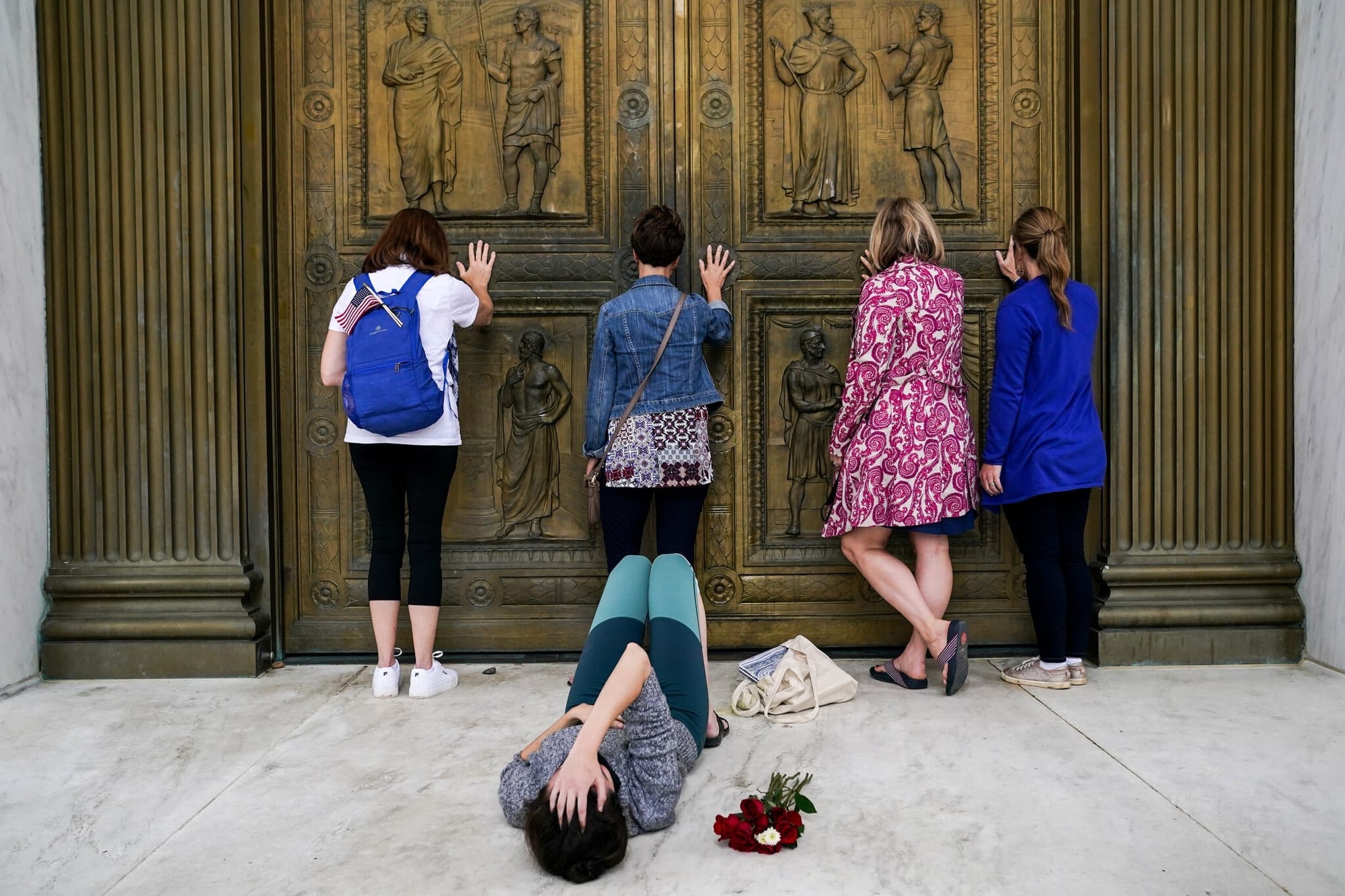
Photo: Erin Schaff/The New York Times. Supporters of Judge Amy Coney Barrett prayed on Saturday in front of the doors of the Supreme Court as Jacquelyn Booth, center, lay on the marble portico mourning the death of Justice Ruth Bader Ginsburg. (Chatting the Pictures video, October 1, 2020.)
Erin Schaff’s photo for The New York Times poignantly captures the dual reactions to Justice Ginsburg’s death. Evangelical women are seen praying at the Supreme Court’s doors while another woman lies on the ground in mourning. The image viscerally anticipates the rush to replace Ginsburg in the waning days of the Trump presidency, the far right’s imminent grip on the institution, and, ultimately, the collapse of Roe.
Stacy Kranitz’s Spotlight Image from Mississippi’s Last Abortion Clinic
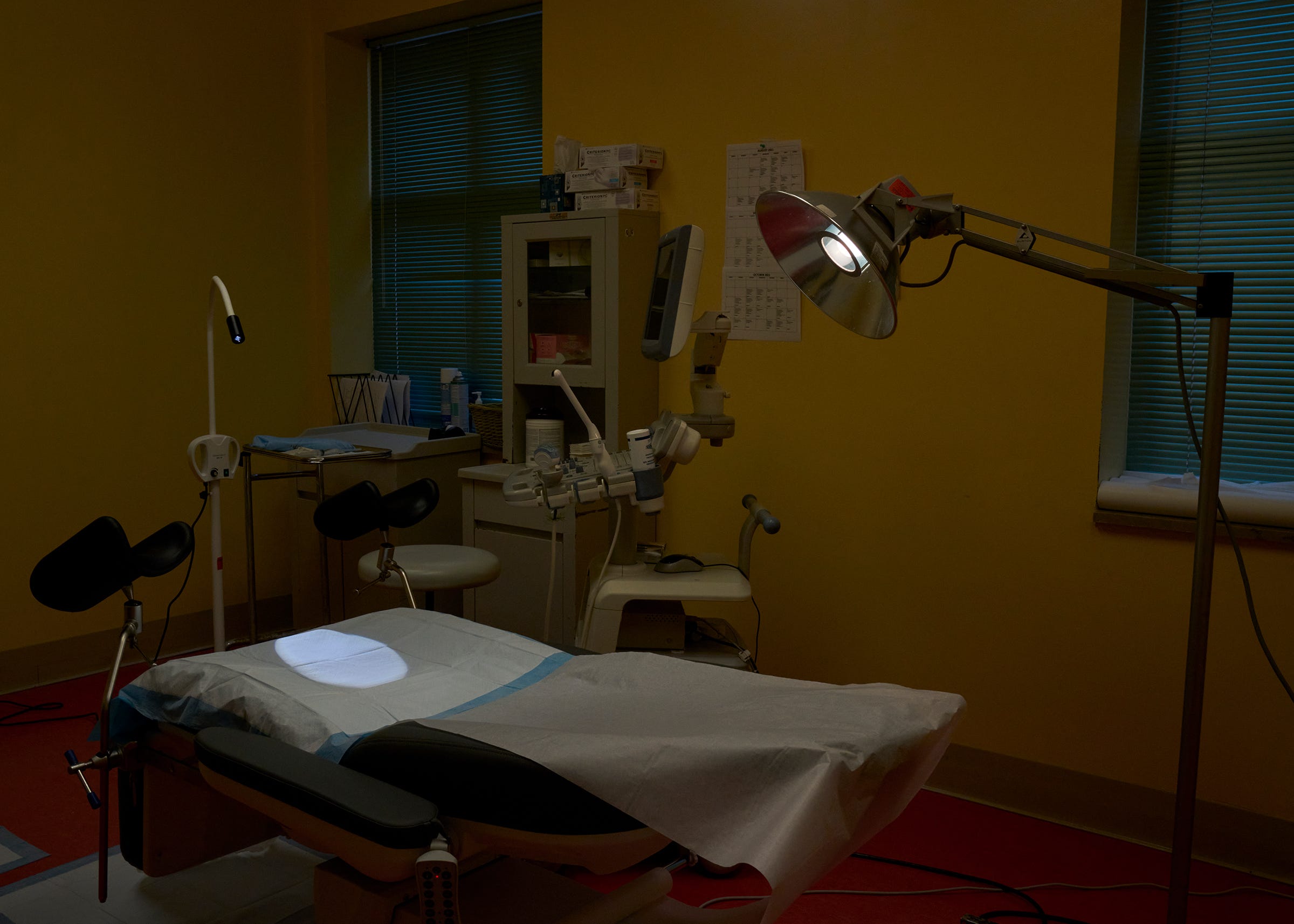
Photo: Stacy Kranitz for TIME. State laws have added new costs, paperwork, and requirements over the years, driving many abortion clinics out of business on October 29, 2021. Stacy Kranitz for Time. (Chatting the Pictures video, December 2, 2021.)
From the court, the narrative immediately shifts to the clinical space. Kranitz’s photo documents the Jackson Women’s Health Organization, Mississippi’s last operating abortion clinic. The image captures the clinic’s precarious status on the eve of a Supreme Court case that could further restrict abortion access. The spotlight metaphorically and illuminates the clinic’s fate and the broader implications for abortion access in America.
A Most Unique and Dignified Abortion Image
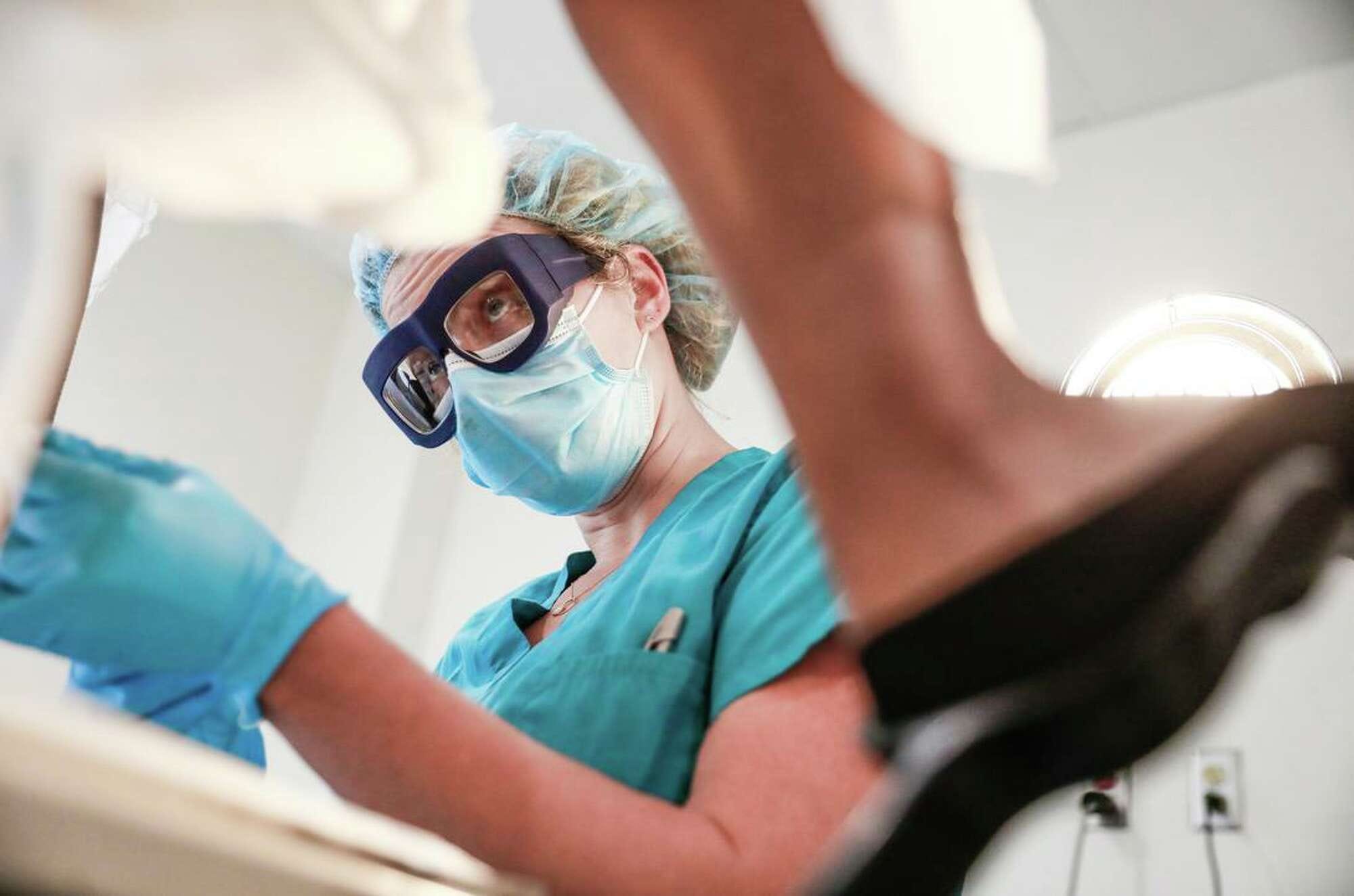
Photo: Gabrielle Lurie/The San Francisco Chronicle. Dr. Rebecca Taub, an OB-GYN specializing in family planning, performs a surgical abortion at the Trust Women clinic in Oklahoma City. Taub travels once a month to the clinic in Oklahoma to perform both surgical and medical abortions. November 2020. (Chatting the Pictures video, December 14, 2021).
Gabrielle Lurie’s photo for The San Francisco Chronicle shows Dr. Rebecca Taub performing a surgical abortion in Oklahoma City. Our discussion points to the disproportionate impact of abortion restrictions on poor women and women of color and the significance of both figures being from out-of-state, highlighting the barriers to access.
With Supreme Court Leak, Abortion on the Clock
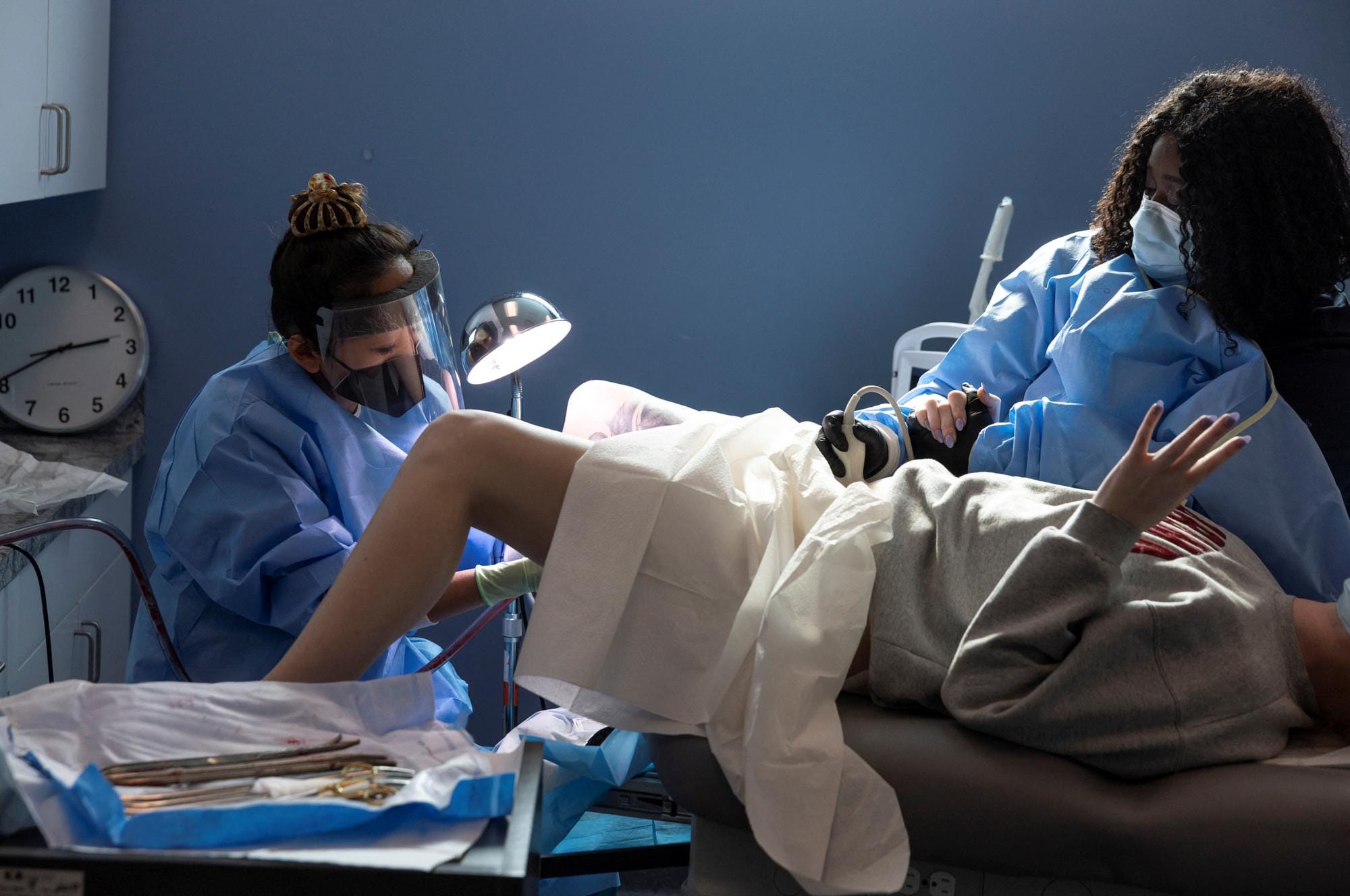
Photo: Evelyn Hockstein/Reuters Pictures. Dr. Shelly Tien performs an abortion while a nurse assists with an ultrasound at Planned Parenthood in Birmingham, Alabama, on March 14, 2022. (Chatting the Pictures video May 11, 2022)
Evelyn Hockstein’s foreboding photo shows Dr. Shelly Tien performing an abortion in Alabama. By March 2022, Alabama was relying entirely on out-of-state doctors to provide abortions—a procedure that could effectively end in many states if the Supreme Court decision, telegraphed months before by the mysterious leak of Samuel Alito’s majority opinion, became law. Threat and dread permeate the image, from the intense contrast of the lighting to the ominous clock ticking on the wall to the tense spread of the patient’s hand.
In the Post-Roe Blur

Photo: Brandon Bell/Getty Images. A 24-year-old woman sits on a curb outside the Supreme Court on June 24, 2022, after the judge’s decision overturned Roe vs. Wade. (Chatting the Pictures video July 20, 2022.)
The photo by Brandon Bell shows a young woman sitting on a curb outside the Supreme Court after the judge’s decision in Dobbs v. Jackson overturned Roe vs. Wade. The disorienting blur creates the perfect balance between shock and resolve. The quote on the sign says: “Let this radicalize you rather than lead you to despair,” a well-known quote from Mariame Kaba. It also lists websites for abortion funds and abortion pills.
An Abortion Patient Assuredly Shares Her Ultrasound Scan
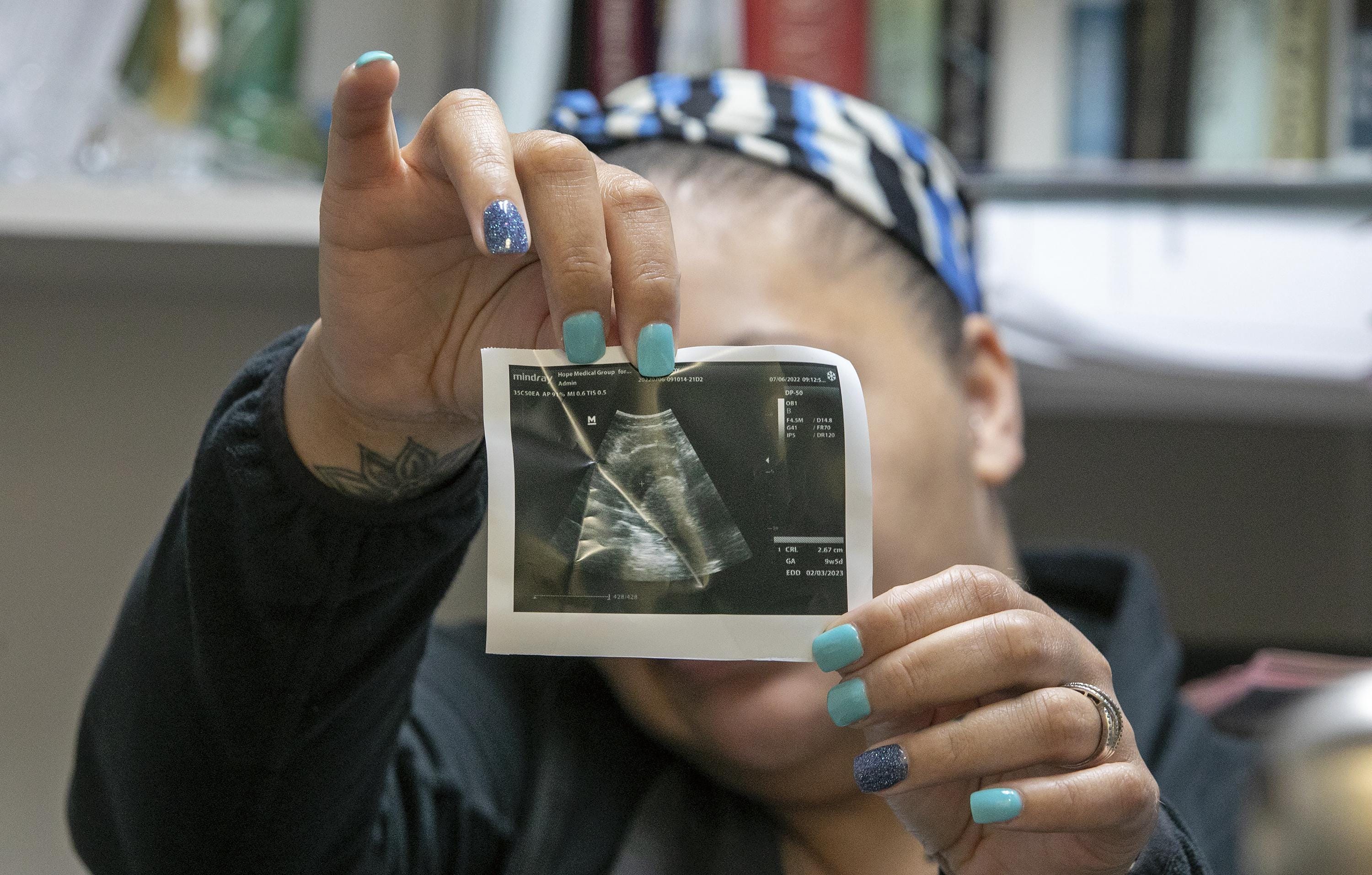
Photo: Ted Jackson/AP. A patient seeking an abortion at Hope Medical Group for Women in Shreveport, La., holds up her ultrasound photo on Wednesday, July 6, 2022. The woman is nine weeks and four days pregnant. (Chatting the Pictures video August 28, 2022.)
Ted Jackson’s photo shows a woman holding up her ultrasound photo nearly two weeks after the Supreme Court officially overturned Roe vs. Wade. Although the clinic expects to be shut down at any moment, a temporary restraining order has allowed it to continue providing abortion services.
The photo speaks to the political, semantic, and visual shift in reaction to the extreme threat and radical new abortion limits. Contesting the way the anti-abortion movement has long laid claim to the ultrasound image, this photo defiantly challenges the assumption that personhood begins at conception. The portrait is practically a manifesto, illustrating how reproductive rights activists have been defending the abortion procedure more openly and honestly since the overturning of Roe v. Wade–including the move away from euphemisms, such as “pro-choice,” to saying the procedure’s name.
Maggie Shannon’s clinical photograph of a practitioner administering a final injection conveys the gravity of a procedure too often shrouded in secrecy, misunderstanding, and extreme bias. From anguished anticipation to resolute confrontation, these images crystallize the complex emotions and urgency to depict abortion’s realities more transparently in the post-Roe era.
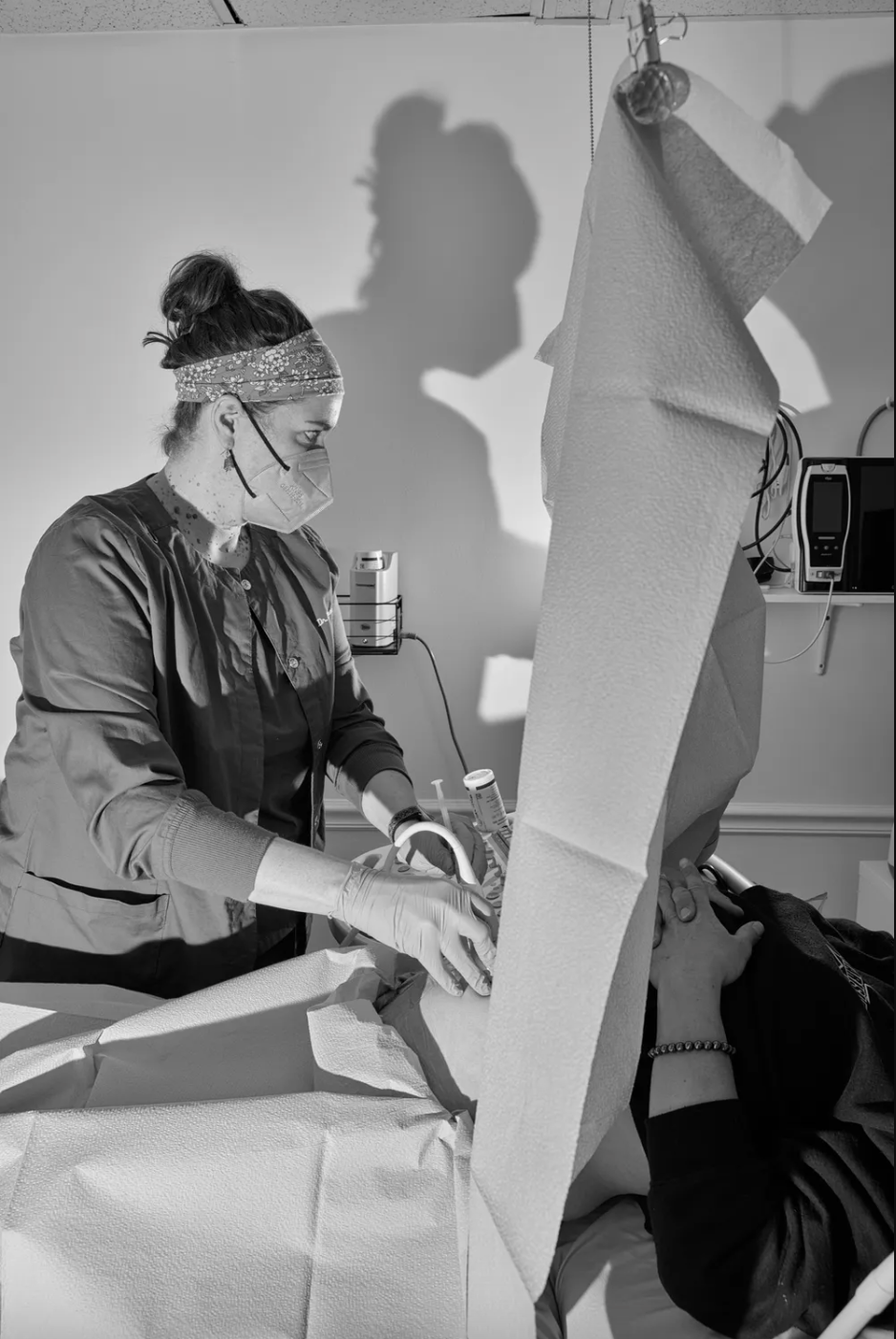

Reactions
Comments Powered by Disqus